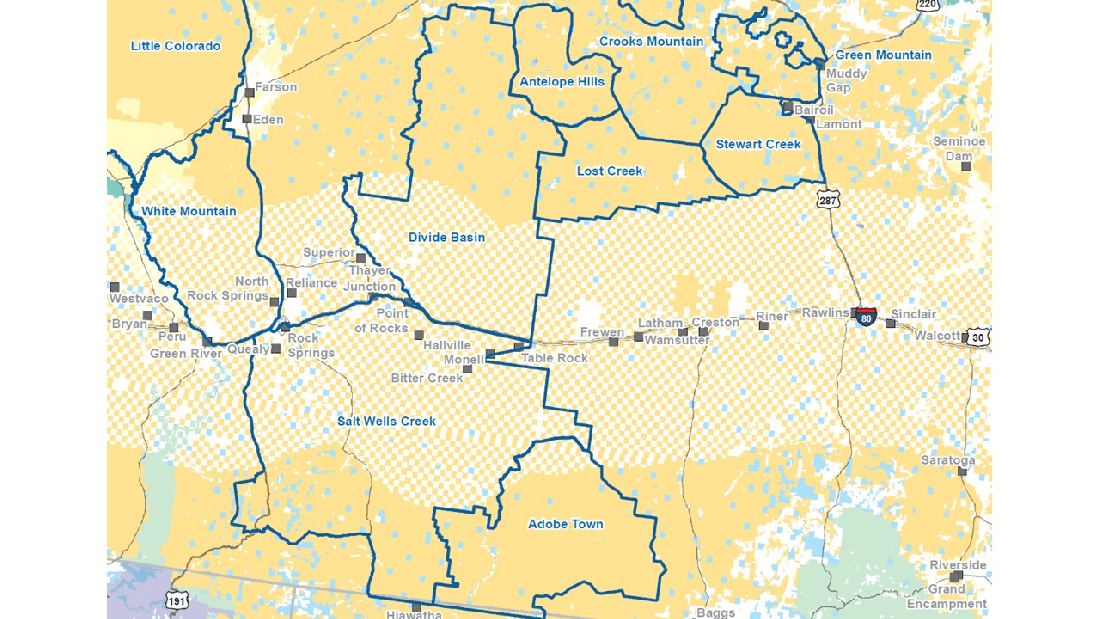BLM announced today the availability of a preliminary environmental assessment for resource enforcement actions in the Wyoming checkerboard. The EA looks the effects of a proposed action and those of one or more alternatives.
The 30-day review period begins today. Implementation of the selected alternative, which will affect five HMAs, could occur as soon as July 2021, according to Section 2.0.
The proposed action features roundups to the low end of AMLs and fertility control treatments. Western Horse Watchers was unable to determine how many years the selected alternative would be valid.
Four of the five HMAs are involved in the Rock Springs RMP amendments.

The HMAs are subject to permitted livestock grazing, per Table 8 in the EA. The table does not provide allotment sizes and grazing periods but those can be obtained from RAS, along with the allotment conditions.
Comments can be submitted online though April 30.
Maps and appendices have been posted with the project documents.







